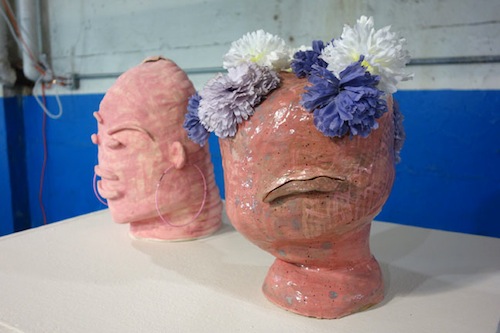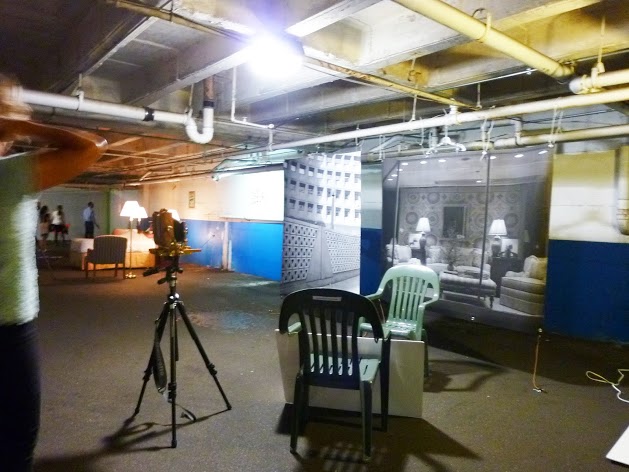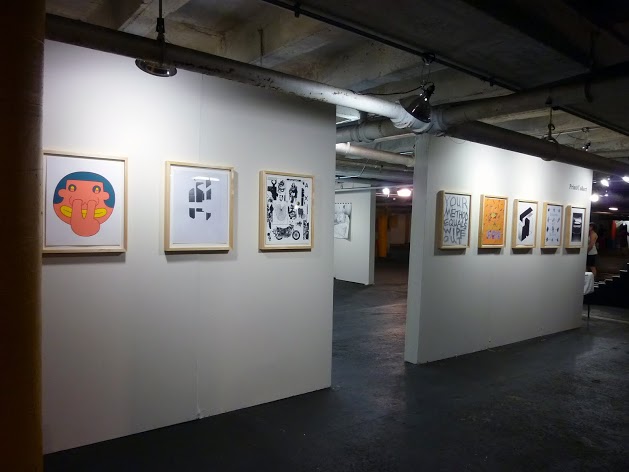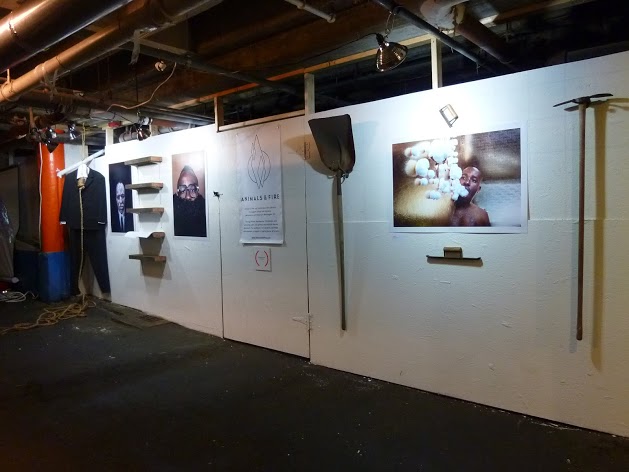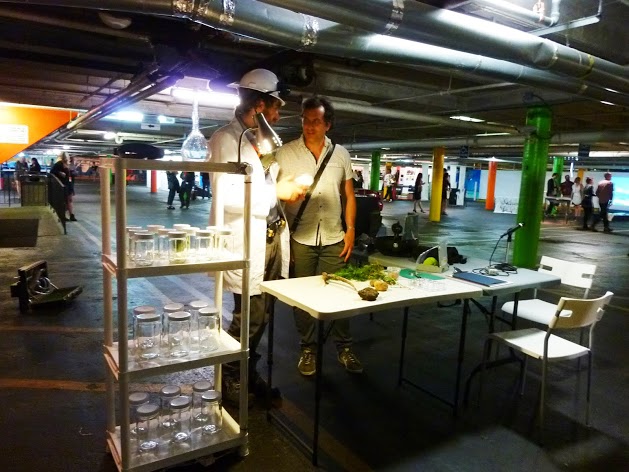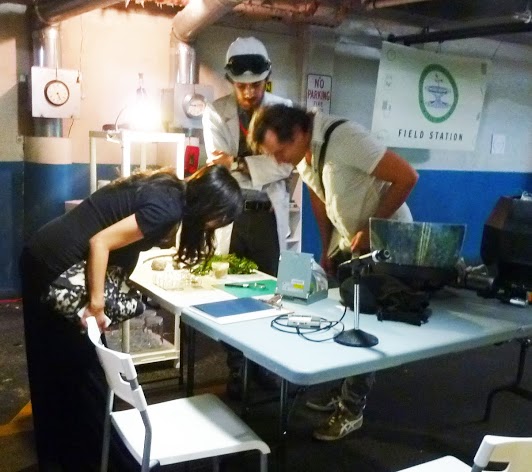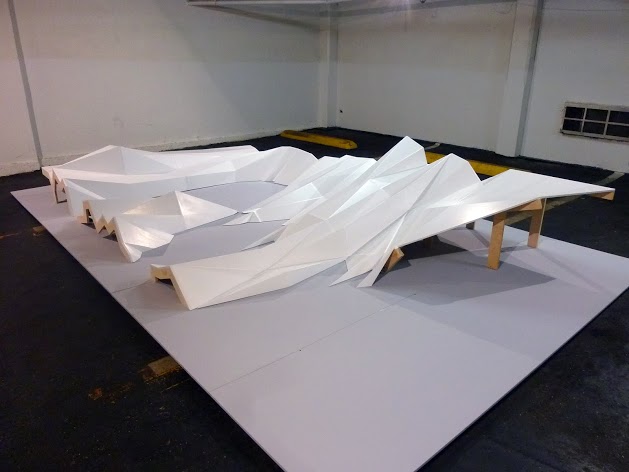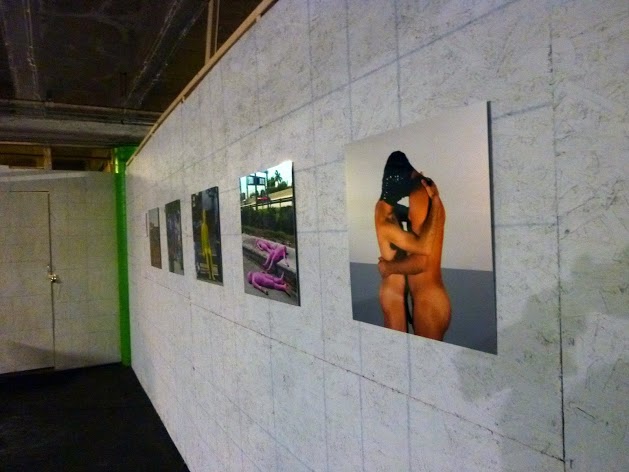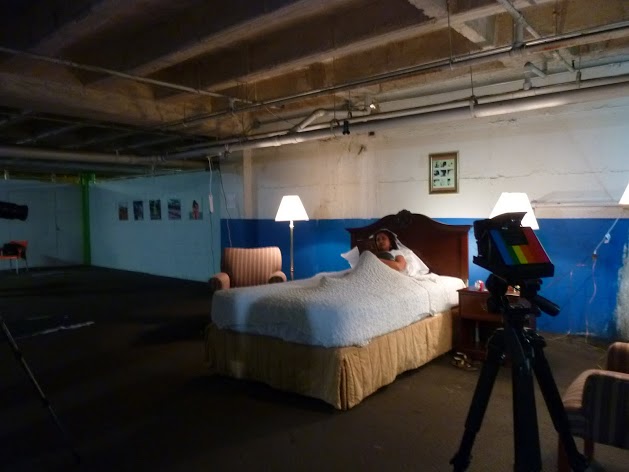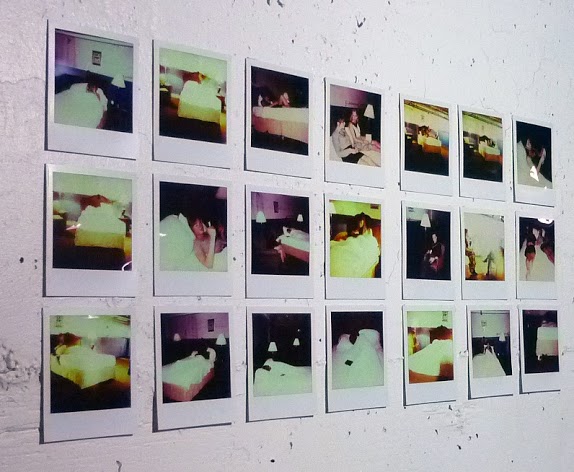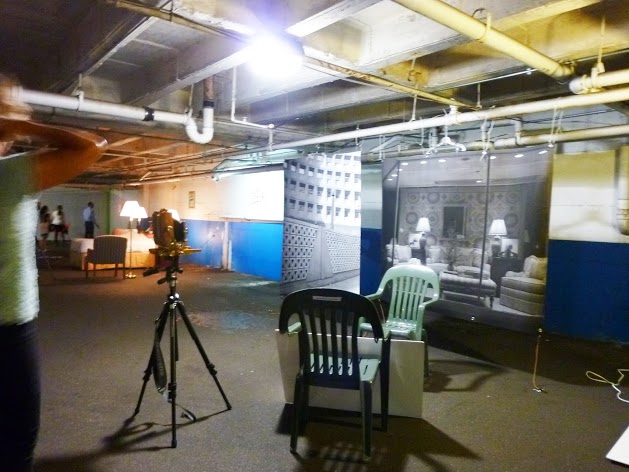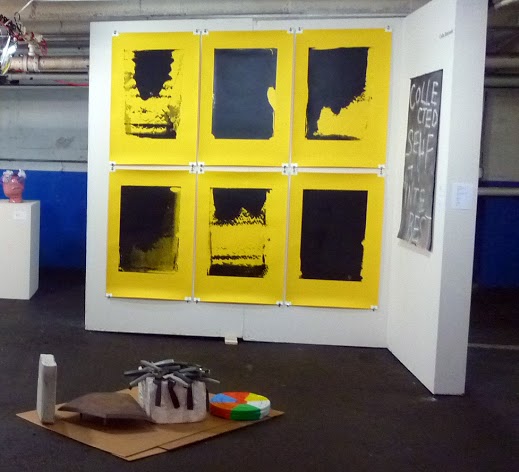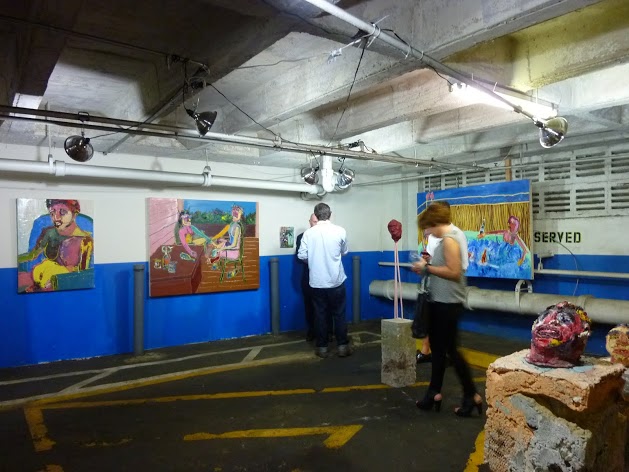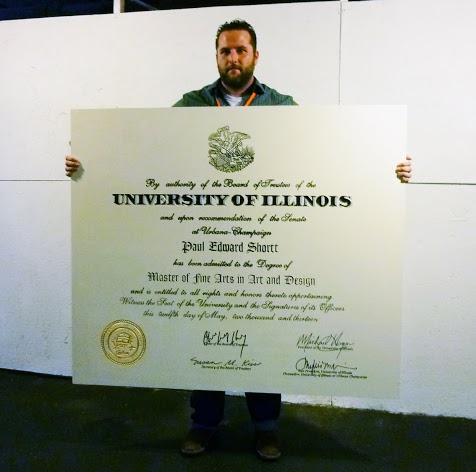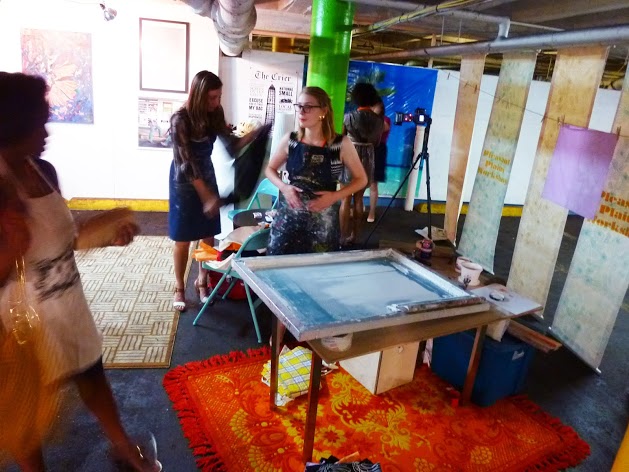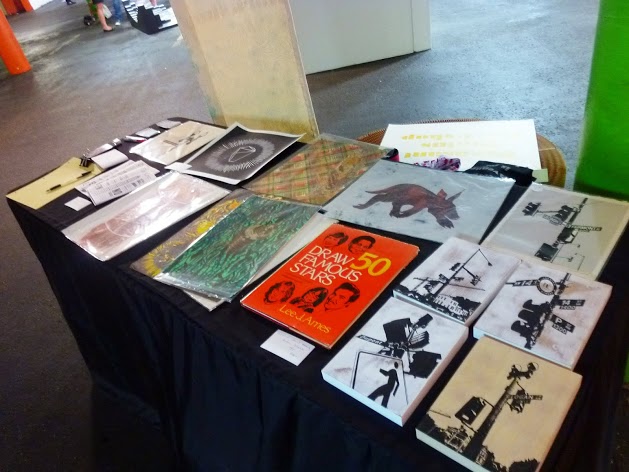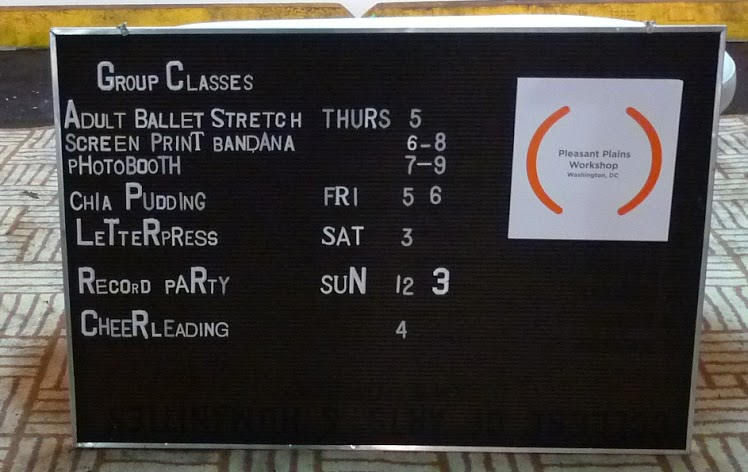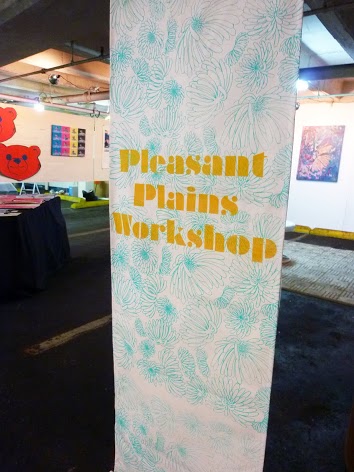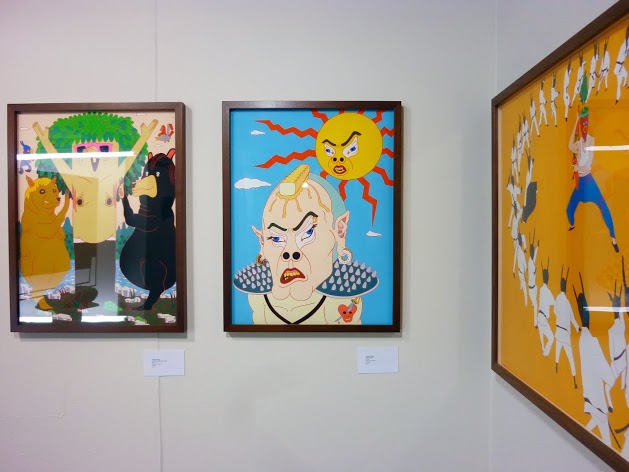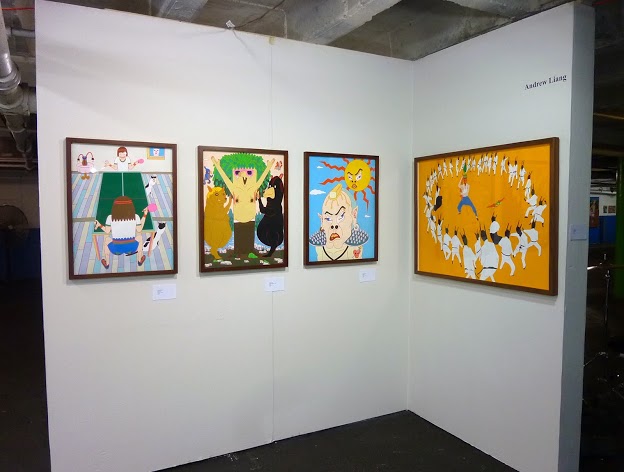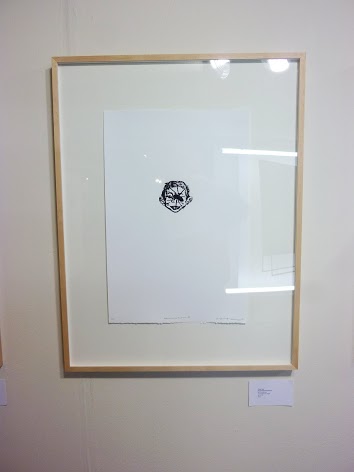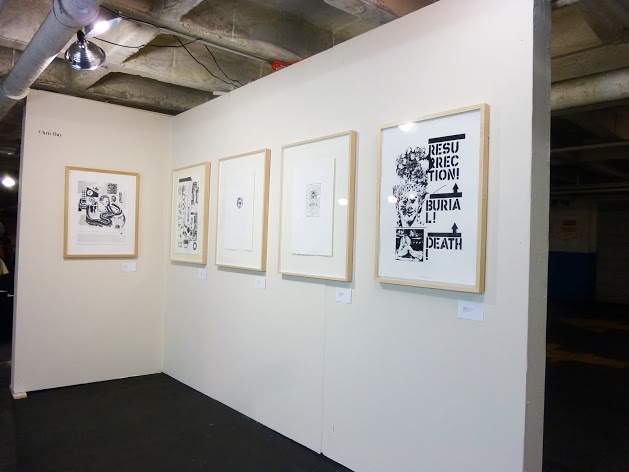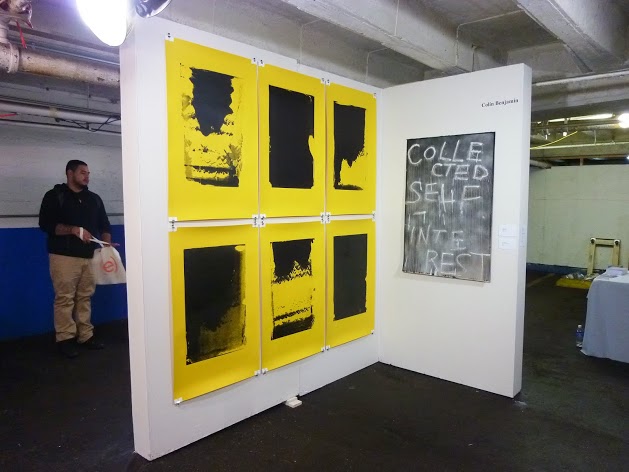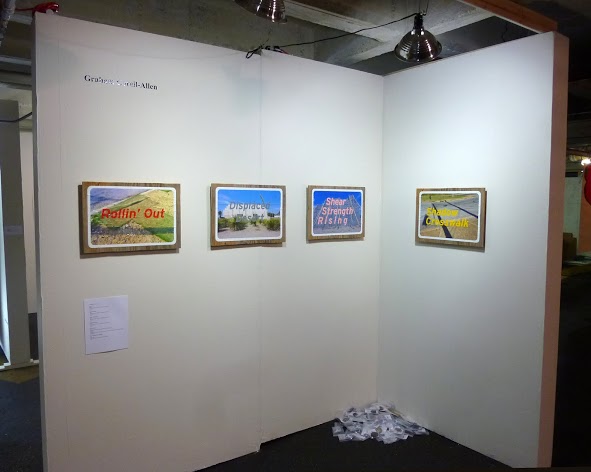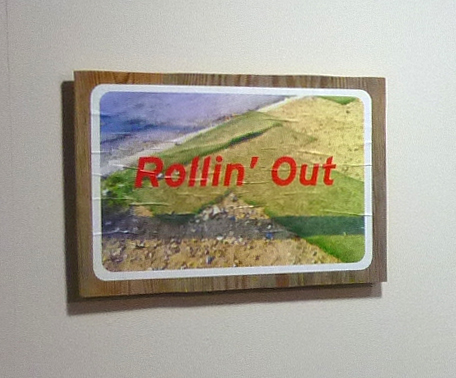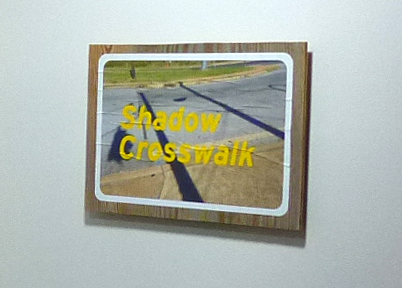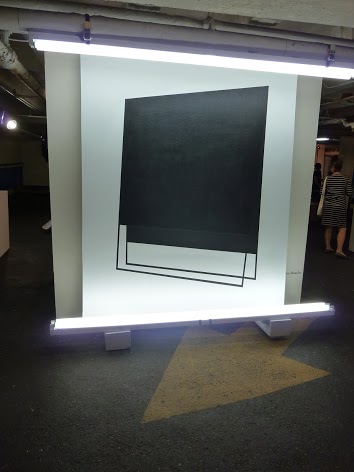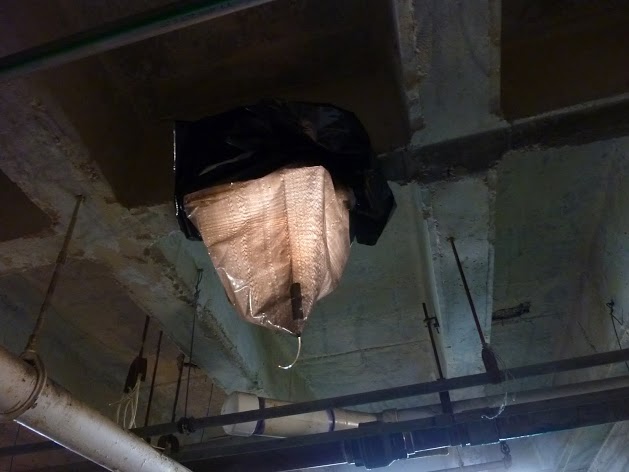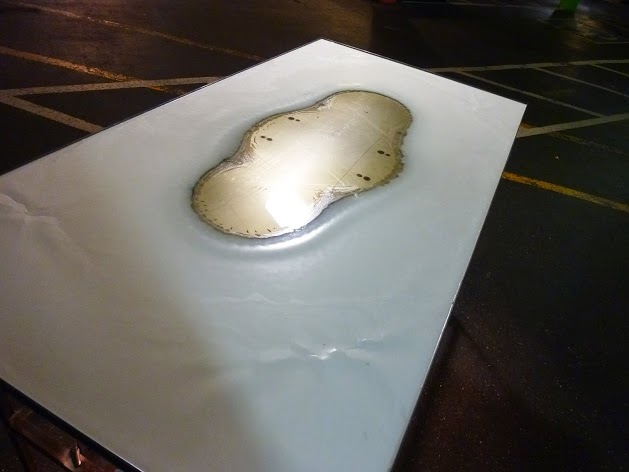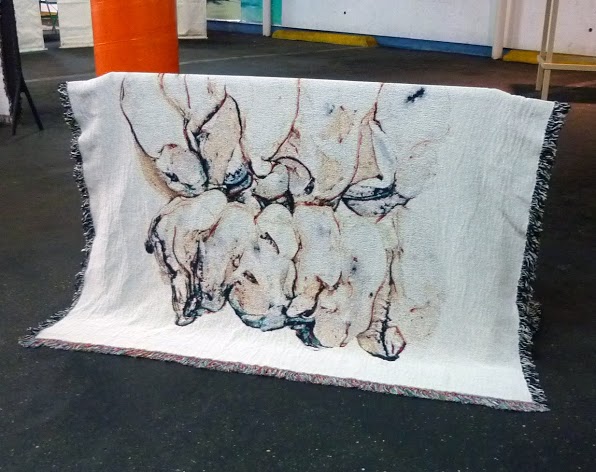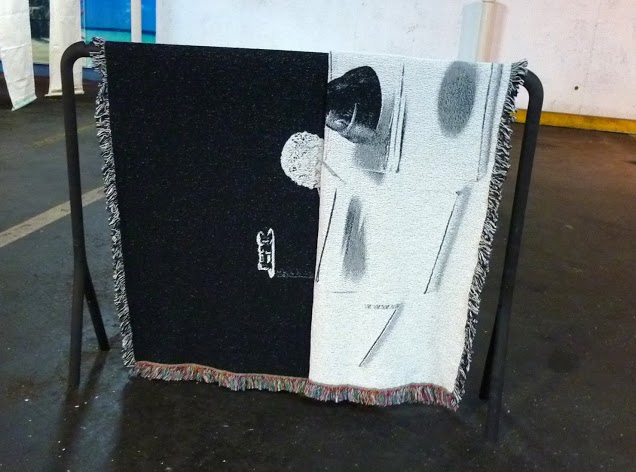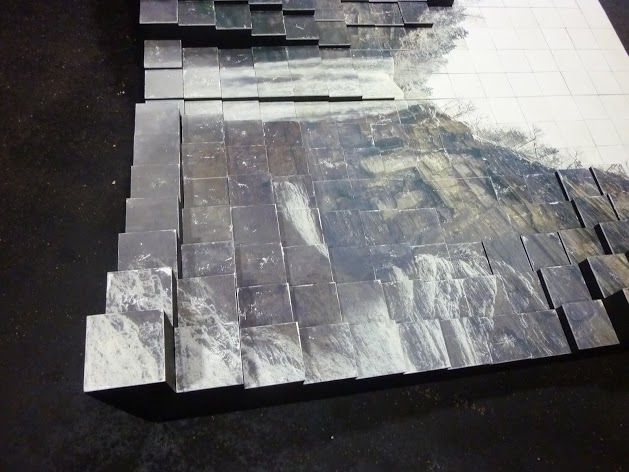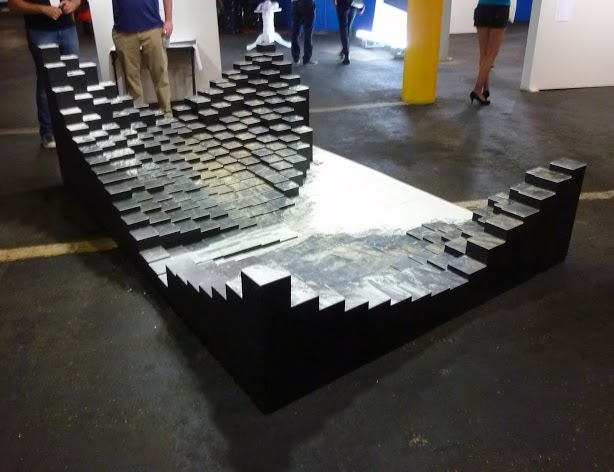Now in its third year, the (e)merge Art Fair is growing into a singular and important representation of emerging art in the Mid-Atlantic region. The geographic scope of the fair continues to grow, drawing in early-career and upstart galleries and artists from within and beyond the region. It also continues to foster a collectors market in DC/Baltimore/Virginia. As well, the fair has always included cornerstone galleries who already have a foothold in the greater art fair community who represent a mix of emerging and mid-career artists; such as Victori Contemporary (NYC), Segal Projects (Los Angeles), Goya Contemporary (Baltimore) and Cynthia Corbett Gallery (London).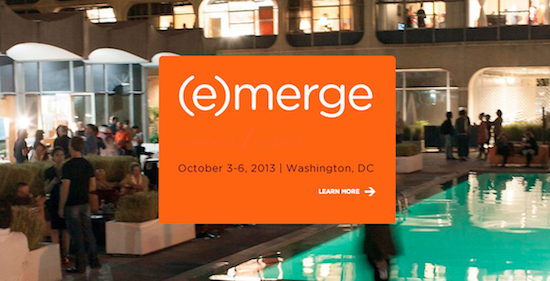
Although it includes emerging artists, the fair is organized from the top down. The rooms and suites on the second floor of the hotel are emptied of furniture and re-purposed by commercial galleries and arts organizations as gallery spaces. The artwork is hung in creative ways, as to avoid damage to the walls – no nails, no tape, perhaps the occasional pushpin. The ground-floor lobby, event spaces, bar and pool patio are reserved for unrepresented artists. These artists were selected by a jury from an open call for applicants, the accepted artists awarded with individual highlight spots, which feature paintings, sculpture, video installations and space for performance art events.
Below the hotel, in the parking garage, an area was set aside for a mix of arts organizations, galleries, and solo artists whose work or presentations are presumably better-suited to the less-finished environment of a garage. Being a bit out of the way, these lower-level spaces are occasionally overlooked (I missed them last year) and unfairly considered less important because, simply, it’s a dingy parking garage. The fees for participating in the fair run from several thousand dollars for galleries on the second floor to free space for the juried unrepresented artists, with costs for smaller, artist-run spaces falling somewhere in-between.
The truth is, this parking garage exhibition space legitimizes the premise of this particular fair as a unique platform for young and underrepresented artists. The garage is where the freedom and energy of emerging galleries and live/work spaces is replicated for the fair audience. Upstairs, the converted gallery spaces can feel awkward and claustrophobic; institutional wallpaper and generic carpeting vibrate against the art, but also emulate what the work will look like in a potential collector’s home.
What makes the garage level a more satisfying experience is the control and freedom available to the exhibitors in how work is shown. Feature artist Benjamin Jones’ sculptural digitized landscape could have potentially fit in one of the hotel’s decorated ground-floor conference rooms, but its architectural planes and expansive scale are much better served by the grey and white concrete of the parking space. Both sophiajacob gallery and the Animals+Fire performance art collective displayed work that would be impossible to show in any other location in the hotel. A+F artists installed approximately 200 square feet of soil, bordered by a short white picket fence for a prefermance. sophiajacob artist Christopher Lavoie’s sculpture, an industrial metal table topped with a shallow tray filled with white wax slowly melted by heat lamps hidden below, is an even greater insurance risk for damage and fire. It’s not only a practical decision to spot these works down here, but also the correct aesthetic choice.
The Print/Collect Portfolio of 8 Prints for 200$
Among the garage-level exhibitors, none took advantage of the opportunities of the space as much as Baltimore’s Print/Collect. In their space, project organizer Jennifer Coster installed floating gallery walls to create an ambitious white-cube exhibition space for her artists. The Print/Collect project collects an affordable print portfolio of eight local emerging artists, the print series cleanly presented on one side of the space. Throughout the space, these artists were given their own gallery walls to show additional work outside the scope of the print project. To anyone’s eye, this was the most professional and gallery-like exhibition space in the entirety of the fair. It’s easy to imagine the more-established second-floor exhibitors being envious of Print/Collect’s presentation, space and style.
The main function of an art fair is to sell artwork, fuel the collector’s market, fund galleries and promote the careers of the represented artists; more-or-less in that order. That said, consider what a fair realistically accomplishes for emerging artists. For the artists, it’s primarily a professional networking opportunity – through meeting other participating artists and galleries, and occasionally a collector; all these relationships occasionally develop into something substantial and long-standing. Beyond what a representing gallery sells, some of these connections might result in other sales. I spoke to several artists who now have work in private and corporate collections as a result of their participation in (e)merge. These sales add greatly to the caché of an artist’s CV and reputation.
On the other hand, as a representative of the art market, fairs can negatively influence galleries and artists by pushing the creative process towards saleable objects and experiences. While the accomplishments at the garage level at (e)merge 2013 were remarkable, they are all most notable in contrast to what the commercial spaces represent. Upstairs, galleries generally presented gallery-ready artwork to be hung on a wall, particularly in a home or office. The freedom of the garage level – the dirt, wax and ephemeral moments – are not only physical and considerate of insurance and repair costs. It’s also freedom of process, largely isolated from concerns of marketability, sales and the influence of purpose that can veer artists from their personal visions towards what might sell and be collectible.

